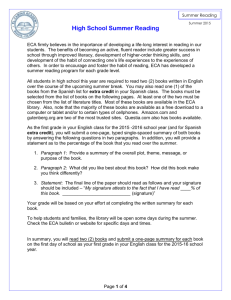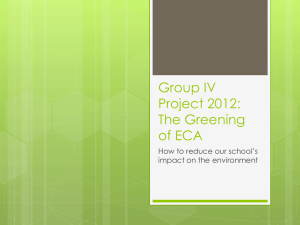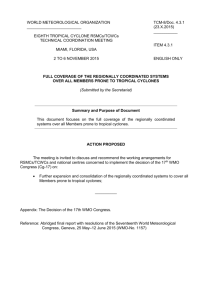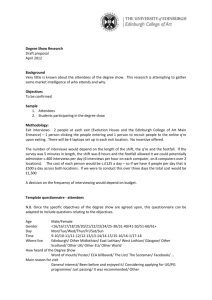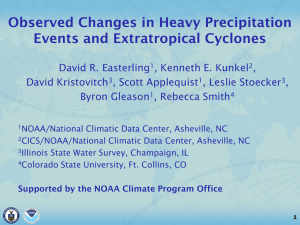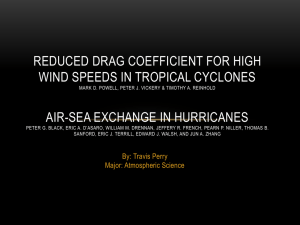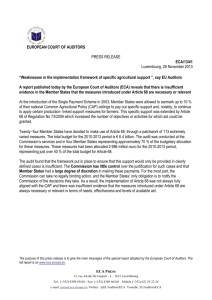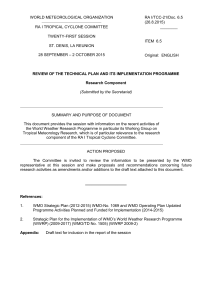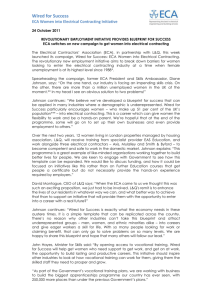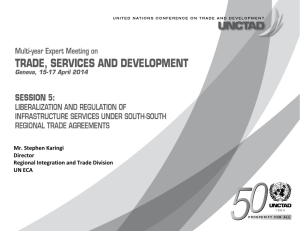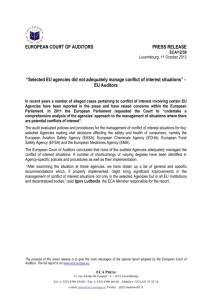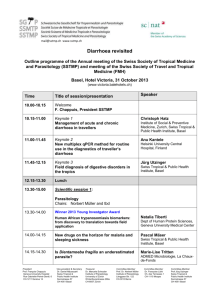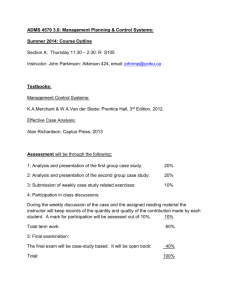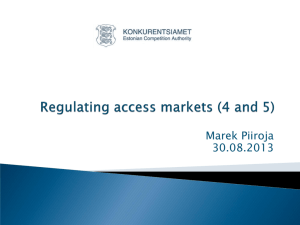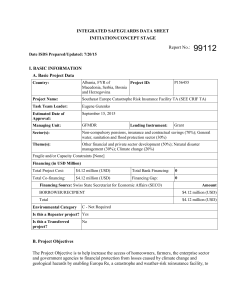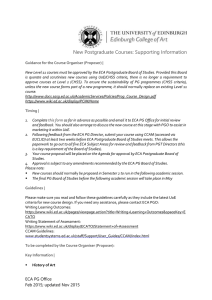Megan Linkin – The Economics of Climate Adaptation (ECA)
advertisement
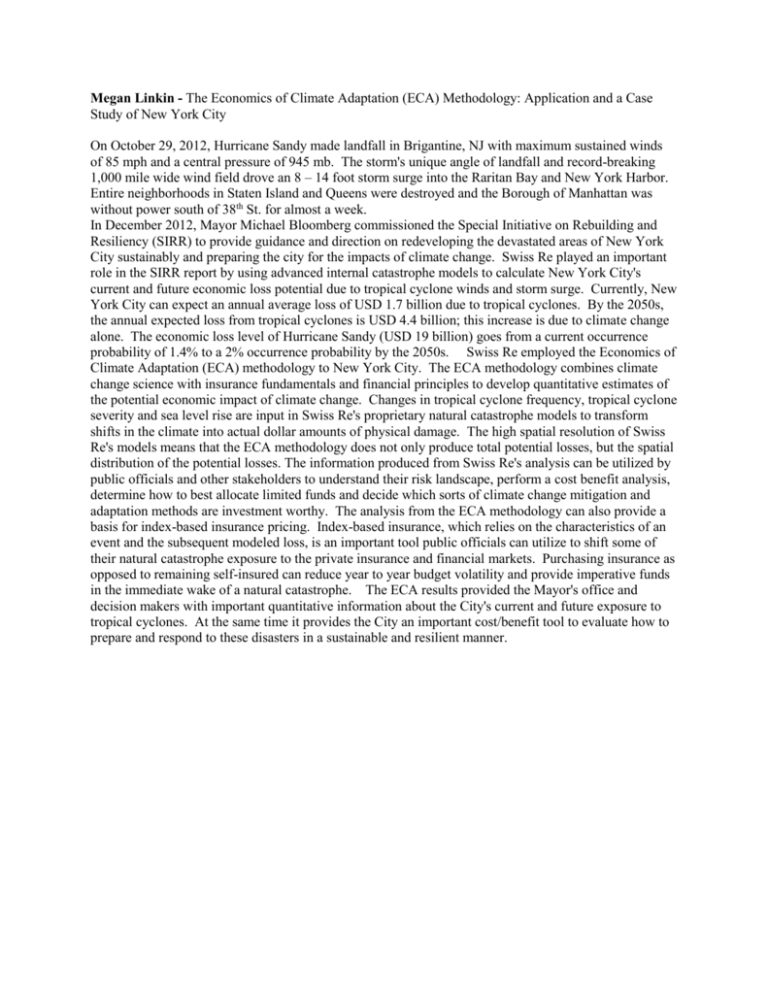
Megan Linkin - The Economics of Climate Adaptation (ECA) Methodology: Application and a Case Study of New York City On October 29, 2012, Hurricane Sandy made landfall in Brigantine, NJ with maximum sustained winds of 85 mph and a central pressure of 945 mb. The storm's unique angle of landfall and record-breaking 1,000 mile wide wind field drove an 8 – 14 foot storm surge into the Raritan Bay and New York Harbor. Entire neighborhoods in Staten Island and Queens were destroyed and the Borough of Manhattan was without power south of 38th St. for almost a week. In December 2012, Mayor Michael Bloomberg commissioned the Special Initiative on Rebuilding and Resiliency (SIRR) to provide guidance and direction on redeveloping the devastated areas of New York City sustainably and preparing the city for the impacts of climate change. Swiss Re played an important role in the SIRR report by using advanced internal catastrophe models to calculate New York City's current and future economic loss potential due to tropical cyclone winds and storm surge. Currently, New York City can expect an annual average loss of USD 1.7 billion due to tropical cyclones. By the 2050s, the annual expected loss from tropical cyclones is USD 4.4 billion; this increase is due to climate change alone. The economic loss level of Hurricane Sandy (USD 19 billion) goes from a current occurrence probability of 1.4% to a 2% occurrence probability by the 2050s. Swiss Re employed the Economics of Climate Adaptation (ECA) methodology to New York City. The ECA methodology combines climate change science with insurance fundamentals and financial principles to develop quantitative estimates of the potential economic impact of climate change. Changes in tropical cyclone frequency, tropical cyclone severity and sea level rise are input in Swiss Re's proprietary natural catastrophe models to transform shifts in the climate into actual dollar amounts of physical damage. The high spatial resolution of Swiss Re's models means that the ECA methodology does not only produce total potential losses, but the spatial distribution of the potential losses. The information produced from Swiss Re's analysis can be utilized by public officials and other stakeholders to understand their risk landscape, perform a cost benefit analysis, determine how to best allocate limited funds and decide which sorts of climate change mitigation and adaptation methods are investment worthy. The analysis from the ECA methodology can also provide a basis for index-based insurance pricing. Index-based insurance, which relies on the characteristics of an event and the subsequent modeled loss, is an important tool public officials can utilize to shift some of their natural catastrophe exposure to the private insurance and financial markets. Purchasing insurance as opposed to remaining self-insured can reduce year to year budget volatility and provide imperative funds in the immediate wake of a natural catastrophe. The ECA results provided the Mayor's office and decision makers with important quantitative information about the City's current and future exposure to tropical cyclones. At the same time it provides the City an important cost/benefit tool to evaluate how to prepare and respond to these disasters in a sustainable and resilient manner.


